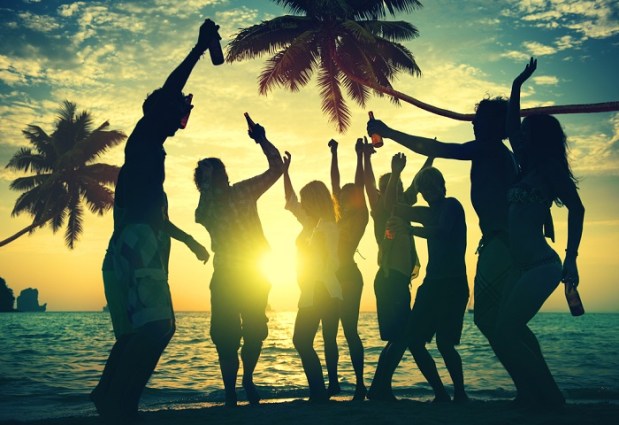Why Spring Break Is Getting Cheaper

While more college students are choosing to work for Habitat for Humanity or teach English in a foreign country for one week in March, there are still plenty of young adult thrill-seekers who want a “traditional” spring break experience. Fortunately, for them, spring break trips are cheaper now than they’ve been in quite some time.
That’s according to a new survey from Expedia that compared the most in-demand spring break destinations for 2016 with their year-to-year changes in average flight prices. Flights to the hottest destinations, Orlando and Miami, are 14 percent lower than their 2015 equivalents. While larger cities, like Phoenix (2 percent lower) and Tampa (9 percent lower), aren’t presenting spring breakers with that high a level of savings, smaller locales, like Fort Lauderdale (17 percent lower), most certainly are.
The trend extends beyond American borders, too. All the greatest hits of international spring break travel, including Cancun, Puerto Vallarta and San Juan, are showing decreases to flights from 10 to 15 percent. For the biggest savings, though, head to what Expedia called “less traditional destinations,” like Paradise Island, Bahamas, where hotels are 45 percent cheaper than last year, or Lake Tahoe, with its rooms priced 110 percent below 2015.
What’s depressing prices to such an observable degree? Sarah Gavin, travel expert at Expedia, said the only way these numbers can be explained is with a storm of reasons converging right around spring break time.
“There are any number of factors that impact spring break pricing — the price of oil, demand, weather, you name it,” Gavin said in a statement. “The good news is that all of these factors, collectively, seem to be pushing prices down. There are good deals to be had. And better deals to be had to major U.S. cities, Hawaii and internationally if you take one simple step: Book your hotel and your flight at the exact same time. Bundling your hotel and flight can yield hundreds in savings that disappear if booked separately.”
It’s undeniable that oil, traffic and weather can bring down prices at desperate travel companies, but those pains are at least temporary. A dip in oil prices or bad weather can happen to any industry, at any time; the same can’t be said for disruptions and lost sales to a competitor like Airbnb.
But that’s exactly what a Hipmunk survey from late February suggested. In 2015, just 4.4 percent of spring break travelers decided to shack up in an Airbnb property. One year later, though, that number had climbed to 9.5 percent, and that was as of Feb. 25, which almost guarantees that more bookings have been made with Airbnb as February gave way to March. In fact, some cities, like Sarasota and Ft. Myers, Florida, saw upwards of 36–46 percent of all spring break bookings processed through Airbnb.
Those should be unsettling findings for the traditional hotel industry and much more so than fluctuations with oil markets or the weather. While those might come and go, Airbnb is a permanent fixture they have to continue to compete against — if sitting back and watching Airbnb more than double its year-over-year spring break bookings can be called competing anyway.
It’ll take the literal start of spring before the dust settles and analysts can make any definite sense of spring break sales, but the numbers don’t look good for the traditional travel industry. This isn’t for lack of trying, though, as boutique hotels and locations that emphasize social architecture over privacy are becoming increasingly more common in many sun-soaked spring break destinations. By virtue of observation, millennials aren’t going after the Airbnb-styled bait.
Which outcome is worse for hotels, though? That these efforts aren’t working fast enough, or that they’re not working at all?
